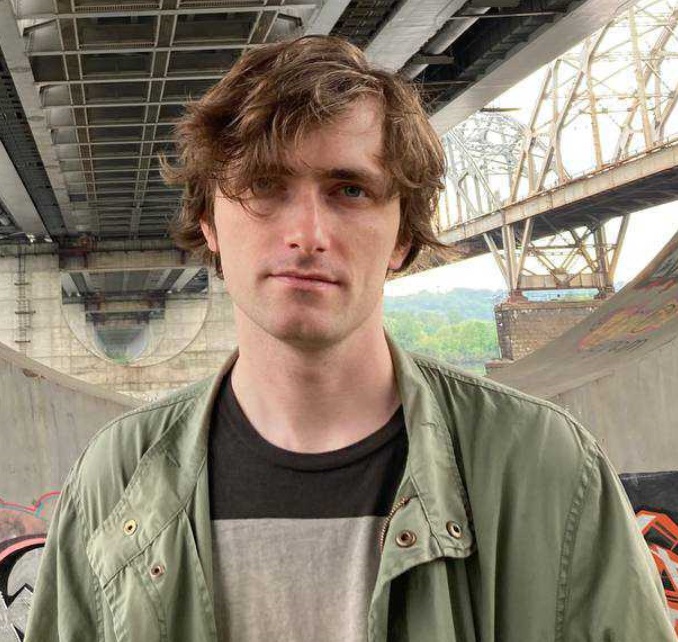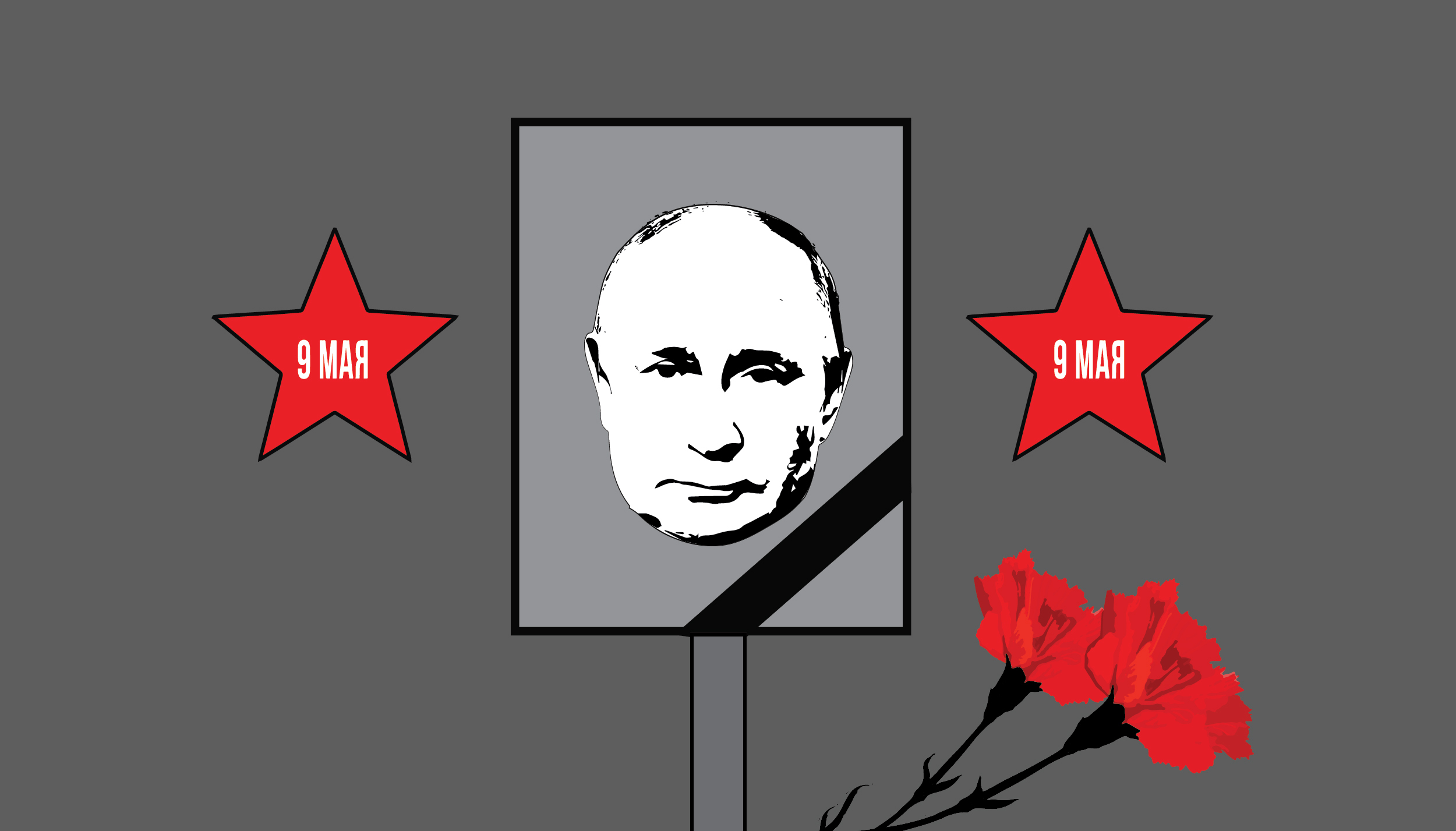

Українською читайте тут.
Russian manufacturer Caviar has unveiled a special edition kit designed for Russians featuring the iPhone 15 Pro adorned with the St. George's ribbon. Named "Pobedny," the product boasts a body embellished with calf leather elements. The set comprises the iPhone 15 Pro/Max featuring an enamel design mirroring the colors of the St. George ribbon and a five-pointed star bas-relief crafted from aviation titanium. A video reveals that upon opening the "victory" set's box, the sound of "Victory Day" can be heard, a song closely associated with May 9.
Two years ago, Putin implemented a ban on the use of iPhones, iPads, and other Apple devices in key ministries and institutions. This action was spurred by concerns within the Kremlin and the Federal Security Service regarding “heightened espionage activities” by American intelligence agencies targeting Russian state entities. The strategy involves a shift in narratives and the application of double standards: Russia endeavors to transform the iPhone, emblematic of the West, into a symbol of victory over fascism, thereby combating the perceived decline of the West as portrayed in propaganda.
This article examines the Kremlin's approach to adapting the celebration of May 9 to contemporary contexts, highlighting its reliance on eclecticism and the manipulation and substitution of symbols, which ultimately serves to isolate itself.
May 9, "Immortal regiment" as a parade of marginals
The tradition of commemorating May 9 as "Victory Day," symbolizing the unity of the communist bloc, traces its roots back to the 20th anniversary of the end of World War II in 1965. Initially, in the aftermath of the war, the relevant dates were observed more as moments of remembrance rather than with solemnity. Leonid Brezhnev, assuming power in late 1964, marked the first instance of a Soviet leader who wasn't a veteran of the Great October Revolution but had served in the Great Patriotic War. This juxtaposition strengthened the cult of the "Great Victory," alongside the existing cult of the "Revolution," thus enhancing Brezhnev's symbolic standing.
The Victory Parade held on Red Square in 1965, only the second after the 1945 parade, underscored this growing emphasis. Subsequent parades occurred in 1985, with annual parades commencing in 2008. Since 1965, May 9 has been recognized as a public holiday in the USSR, whereas previously it had been observed as such only from 1945 to 1947.
In 1975, amid a period of "détente" between the Soviet Union and the Western bloc, leaders of democratic states such as the USA, France, and Great Britain attended events commemorating the victory of the Allies in World War II for the first time. Over 50 foreign leaders and heads of international organizations gathered to mark the 50th anniversary of the victory over Nazism in 1995, with similar celebrations for the 60th anniversary.
The return of armored vehicles to parades in 2008, shortly before Russia's attack on Georgia, marked the first instance in 17 years. Consequently, the 2010 celebrations in Moscow saw a reduced attendance of foreign leaders compared to previous anniversaries, with many delegations sending diplomats in lieu of heads of state.
Following the annexation of Crimea, leaders of Western countries (with some exceptions from certain Balkan states) largely ceased to attend Kremlin invitations. On the 75th anniversary, alongside Putin, there were seven leaders, most of whom were from the "near abroad." In 2021, only one world leader accompanied Putin— the president of Tajikistan, a country with which Russia's relations have soured due to numerous refusals of entry to Russian citizens after individuals from Tajikistan became suspected perpetrators of an attack at the "Crocus City Hall."
In 2022, amid the onset of a major conflict, no leaders visited Putin. In 2023, the Kremlin managed to "mobilize" the leaders of Kazakhstan, Kyrgyzstan, Tajikistan, Uzbekistan, Turkmenistan, Armenia, and Belarus. According to Yuri Ushakov, an aide to the president of Russia, this year, leaders from Belarus, Kazakhstan, Kyrgyzstan, Tajikistan, Turkmenistan, Cuba, Laos, and Guinea-Bissau are expected. Armenia is distancing itself from direct support of Russia after Russia did not support Armenia in the Third Nagorno-Karabakh War in the autumn of 2023. Consequently, its leader, Nikol Pashinyan, will not participate in the parade, although he will be in Moscow on the eve of May 8. The participation of the leader of the small West African country, Guinea-Bissau, in the parade was incentivized by Russia canceling its debt of nearly $27 million (more than 1% of the country's GDP) in March of this year.
In 2012, journalists from the regional Tomsk TV channel TV2 sought to imbue the significant dates historically utilized by the Kremlin with personal meaning. Three friends—journalists Sergey Lapenkov, Sergey Kolotovkin, and advertiser Igor Dmitriev—proposed archiving family stories connected to the war and maintaining a chronicle on a website. On May 9, they suggested sharing photos of their relatives who perished in the war, thereby infusing the day with familial remembrance.
Fate played a cruel joke on the initiative's authors. The initiative and its corresponding website were named the "Immortal Regiment." The statute of the "Immortal Regiment" drafted at the time outlined four key points: it was to be non-commercial, non-political, non-image-based, and non-governmental. The initiative garnered widespread support. However, by 2015, the campaign was co-opted by Putin's creation, the "All-Russia People's Front," for state propaganda projects.
Initially, authorities began to regulate the campaign, issuing black-and-white portraits of unfamiliar Soviet heroes to schoolchildren, organizing state-sponsored events filled with officious posters, and eventually bringing portraits of those killed in the Russian military campaign in Syria and the modern Russian-Ukrainian war, along with images of Stalin, to the campaign. Russian propaganda then began to utilize the campaign to mobilize pro-Russian forces worldwide. Propaganda completely distorted and redirected the independent initiative for its own benefit.
The initiators of the "Immortal Regiment" initially partially, and later completely, distanced themselves from their project, continuing only to maintain the archive. The TV channel TV2 was stripped of its license in 2015 and began operating on the internet. On March 4, 2022, the publication's website was blocked after two warnings regarding the coverage of Russia's full-scale invasion of Ukraine. The website subsequently removed the chronicle itself. The initiators of the "Immortal Regiment" criticized Russia's invasion of Ukraine.
"The tragedy is that few people realize that in this war, the descendants of those who fought then, whom we now call the 'Immortal Regiment,' are on both sides. I think our ancestors would curse us for what has happened," commented one of the creators of the "Immortal Regiment," Sergey Lapenkov, on the Russian-Ukrainian war.
For many years, Russia managed to exploit the theme of the "anti-fascist consensus" that has existed in Western societies since 1945. Moscow outwardly positions itself as a defender of the anti-fascist "Yalta" consensus, with the participation of Western leaders in the Moscow parade dedicated to May 9 being the culmination of this positioning. However, Russia's expansionist foreign policy, which contradicts both anti-fascist postulates and humanitarian laws, has worked against it—it has lost its status as the symbolic center that united Western leaders under the banner of fighting global evil. The Kremlin uses the cult of victory in World War II to impose a false impression of ideological consistency in the fight against Nazism. Therefore, propaganda vilifies opponents of Russian power, labeling them as fascists and Nazis. In particular, at the 2023 event, Putin equated the "Western elites" with fascists.
We extensively covered how hostile propaganda parasitizes on the postulates of left-wing ideology and manipulates the anti-fascist consensus in this material.
The Western technique was defeated: first as a tragedy, then as a farce
As per the British think tank International Institute for Strategic Studies (IISS), during the initial two years of the full-scale invasion, Russia incurred losses of 8,800 armored vehicles, which included 3,000 tanks. This figure surpasses the quantity of tanks operational as of February 2022. To mitigate the shortfall, Moscow resorted to deploying its strategic reserves of armored vehicles to the front lines. However, Russian sources remain silent on this matter, instead opting to diminish the efficacy of Western weaponry supplied to Ukraine by its allies, and celebrating instances where such weaponry is damaged or incapacitated. We delved deeper into how Russian propaganda undermines the potency of Western arms aiding Ukraine in this piece.
Since the era of the USSR, Russia has been engaged in a rivalry with the West in the realm of weapons production — a rivalry reminiscent of the "arms race" of the previous century. Presently, amid comprehensive opposition to the North Atlantic Alliance, the competition encompasses not only the quantity and quality of military innovations but also production capabilities, thus assuming a new dimension.
Having acquired certain Western weapons samples amidst the conflict on Ukrainian soil, the Kremlin opted to showcase them at an exhibition in Moscow. According to the Washington Post, the exhibition features over 30 pieces of equipment from 12 countries, all marked with the respective flags of origin. Notable entries include the British Saxon armored personnel carrier, the Swedish CV90 infantry fighting vehicle, the American Bradley infantry fighting vehicle, the French-made AMX-10RC armored reconnaissance vehicle, the German Leopard tank, and the Azovets tank support combat vehicle. Interestingly, the exhibition coincides with the Victory Parade on Red Square in Moscow.
Propagandists approached the exhibits with irony. For instance, as reported by rg.ru, they asserted that the Russian counterparts are no less capable and often superior: "These tanks, armored personnel carriers, and infantry fighting vehicles didn't stay out of commission for long. They were swiftly dealt with by the Russian military. After being 'charmed' by repair units, the equipment is once again combat-ready. Moreover, we possess plenty of our own equipment, which, as it turns out, is in no way inferior to Western models and often outperforms them."
Propagandists associated with the "Russian Weapons" project alleged that Ukrainian fighters were so inept that they couldn't even handle the new equipment properly: "The first Ukrainian BMPT was named 'Azovets' and was logically assigned to the 'Azov' punitive regiment. However, they had no clue how to operate it and simply hid it away." Additionally, according to "Izvestia," Ukrainians often timidly abandoned their positions, leaving behind valuable equipment that became easy prey for Russian forces: "The showcased samples are in operational condition, having been abandoned by Ukrainian armed forces to avoid confrontation with Russian troops. The Bradley infantry fighting vehicle is the most 'easily acquired' NATO model on the front lines. In December 2023, members of the 'Center' group of the Russian Armed Forces seized a vehicle just 100 meters from Ukrainian armed formations' positions."
In 2022 and 2023, an exhibition featuring destroyed Russian equipment was displayed on Khreschatyk in Kyiv during Independence Day celebrations. Among the exhibits were crushed Russian tanks, armored vehicles, and remnants of rockets—equipment that Putin had hoped would enable him to conquer Kyiv within three days and subdue the Ukrainian people. Consequently, the burnt Russian military hardware showcased on the capital's main thoroughfare serves as a symbol not only of thwarted Russian ambitions for neo-imperialism but also of the tragic warfare unfolding in the heart of Europe in the 21st century. It's reminiscent of the exhibition of captured German equipment held in Gorky Park in Moscow during the Second World War in 1943.
Reiterating the concept of an exhibition in the Russian capital dilutes the original intent behind such an action: this equipment never made its way to Moscow, never targeted civilians, and wasn't even situated within Russian territory. Its purpose lies in the defense of Ukrainians and their borders, aspects that the Kremlin has overlooked for the past decade. The Moscow exhibition merely embodies the "Russian measure," showcasing its expansionist and xenophobic facets. It symbolizes the Kremlin's weakness, incapable of breaking Ukraine and the solidarity of its allies, resorting instead to forcefully seizing what doesn't rightfully belong to it—particularly military-industrial complex technologies, levels of which Russia struggles to attain due to various constraints.
The traditional May 9 parade, initially conceived as a unifying event against Nazism and xenophobia, has transformed into a representation of Russians' isolation and detachment from the global community. Its original significance—serving as a reminder of the threats posed by global evils and the imperative of collaborative efforts for security and prosperity—has been depleted. The celebration itself has metamorphosed into a carnival-like display monopolized by a single actor. In both form and substance, Russia's state-imposed racism positions it not merely as a successor to the USSR, but rather to the National Socialists.
Illustration: Natalia Lobach


